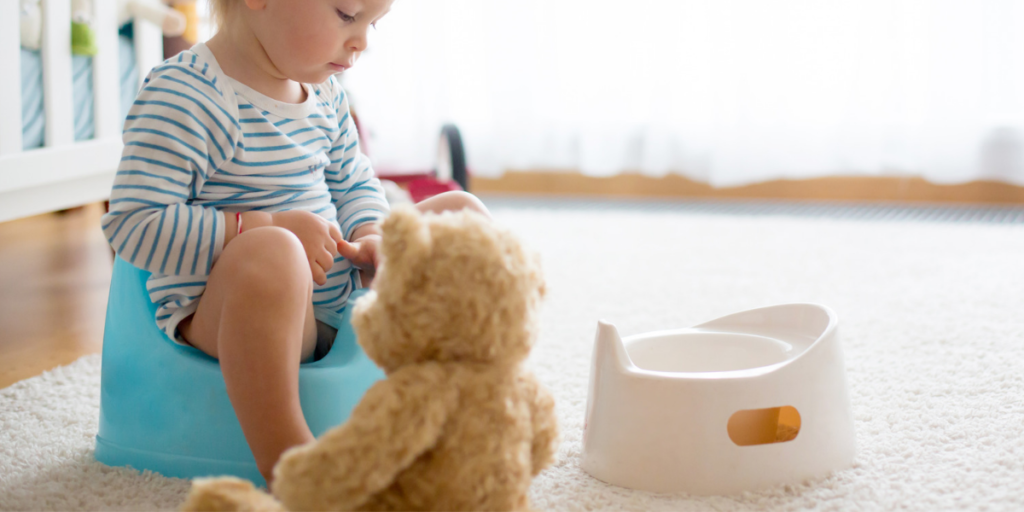
Potty Training Toddlers with Bashful Bowels and Bladders
In the early years of childhood development, many toddlers experience a period of time when they feel bashful about peeing or pooping on the potty. This behavior may have resulted from a diapering experience that was uncomfortable for your child to expel. Hard stools can be very uncomfortable for your child and cause him or her to develop fear and anxiety during toileting time. You may have noticed that your child hides to use it in their diaper, especially for pooping. Hiding during this time can also mean your child is seeking a quiet and private place to take care of his or her business. Peeing in the potty/toilet is a lot easy for the child to grasp and master than pooping. However, during potty training, peeping accidents do happen. These accidents should be positively redirected with reassurance to your child that it is okay!
SuperMomInfinity is a participant in the Amazon Services LLC Associates Program, which is an affiliate advertising program designed to provide a means for sites to earn advertising fees by advertising and linking to Amazon.com. Please read my Disclosure for more details.
Toddlers Transition from Diapers to Toilet
Your toddler is now experiencing a life-changing transition from the diaper to the toilet. This transition can be a challenge for your child to understand and grasp the concept. However, your patience and understanding are very important during this transition.
Peeping is not the typical activity your little one is thinking about. For toddlers and potty training beginners, there’s really nothing exciting about stopping whatever has the child’s attention or missing out on something exciting just to go pee. Your child knows there is a second option of expelling pee or poop because they have adapted to going in the diaper for at least a whole year.
Asking the child if he or she needs to go usually results in a no response. Orientating your child to their new potting environment is the initial step. Peeing in the potty on a routine basis is also very helpful. This will help your little one get adjusted to the transition from diaper to the toilet and adapted to their new environment.
Preventing Bashful Toileting Behaviors in Toddlers
Children are also very smart and can feel your vibe when you are changing a poopy diaper. Even though it may sink, it’s not nice to frown or say “you stink”. The child sees your facial expressions and reactions which cause your child to hide and poop, refuse to communicate their pooping needs and lead to bashful toiling behaviors. Here are a few ideas you can consider to prevent bashful toileting behaviors:
- Sing a favorite song during diaper changing
- Ready Potty Books Before Training
- Never say “you stink” or other similar Phrases
Epexelling waste from our body is a natural activity of life and should be considered an important activity of daily living. Bashful toileting can be prevented by making diaper changes fun and nonjudgmental.
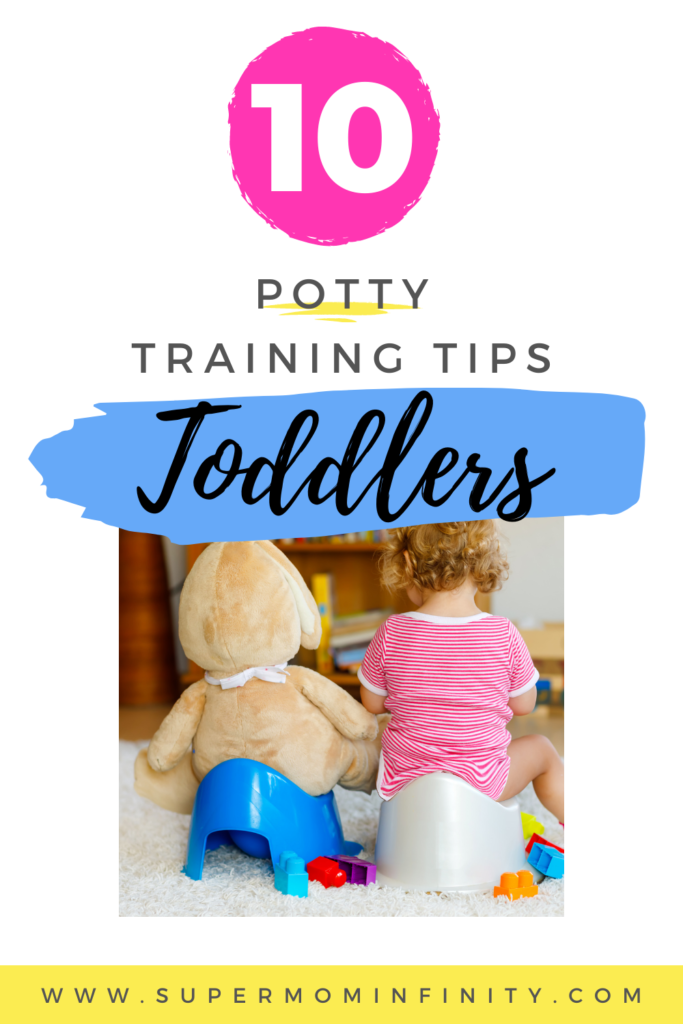
10 Potty Training Tips to Prevent and Reverse Bashful Bowel and Bladder
However, to reverse bashful toileting behaviors, you have to consider all the preventions measures first. The 10 Potty Training Tips will give you direction on how to prevent and reverse existing bashful bowel and bladder during your child’s potty training journey. Let’s start from the beginning!
1. Sing a favorite song during Diaper/Toileting
Singing songs to your child is definitely one of the best calming methods you can offer to your child. Even if you don’t believe you are the best singer, your child absolutely finds comfort in your voice. However, singing to your baby during diaper changes is highly recommended and establishes the foundation for a positive potty training experience. This method is helpful for you because now you are less likely to say “eww” or “you stink”.
2. Read Potty/Toileting Book Early
Reading potty training books for your baby will help them foresee upcoming events or milestones. Your child will become familiar with the images in the potty book. You can also orientate your little one to the bathroom items and point to the images in the book to target their memory. Here is a list of potty training books you can begin reading to your baby before and during their potty training journey.
5 Potty Training Books for Toddlers
Here are 5 fun potty training books for toddlers available for both girls and boys.
A Potty Time For Me!
A Potty for Me illustrates realistic going to the potty activities and potty accidents. This is our favorite!!! The book also encourages interaction with the open flaps for your child. There’s not a specific gender expressed throughout the book, which makes the book accessible for both girls and boys. However, mommy is the parent instructing the potty training.

Potty Time with Cocomelon
J. J.’s Potty Time book includes audio push-activated buttons that make learning the potty for your little one fun and interactive.

Potty Time with Daniel
Daniel the Tiger has a ton of great educational and developmental books. Potty Time with Daniel also includes audio press activation to offer interaction for your child.

Princess Potty
Princess Potty is a book for girls with an exciting surprise your daughter will definitely enjoy. Potty time can be hard and this book offers your daughter the opportunity to feel like the princess she is with the princess crown included.

The Potty Book for Girls
Here is a fun transition from diapers to the potty book for girls. You can orientate your child to their potty environment and use this book to assist you.

3. Orientate your child to their Potty Environment
Show your child everything in the bathroom. You may discover your child is afraid to be alone by themself or does not like the wall art. Having potty training beginners aware of everything within their potty environment helps build their understanding of what the toilet is actually used for.
4. Never Say “you stink” or other Similar Phrases
Don’t get me wrong, poop does stink, however, one day your little one will transition from the diaper to the potty. Saying “you stink” is not nice, especially during his or her diapering days. Your child can feel your vibe. Negative phrases and facial expressions may contribute to bashful toilet behaviors in the long run. Help your little one build their confidence and self-esteem early with a positive diaper changing experience during their diapering days.
5. Offer a Potty Comfy
Potty time is a major milestone for your little one. Hard stools can be uncomfortable for your child and can cause them to need their comfy by their side. Comfies are items or things that calm your child, make them relaxed, and are satisfying. Such things can be a favorite blanket, teddy bear, fidget, and so forth. Your potty trainer may even consider you as their Comfy!
6. Offer Privacy
Even if you are your child’s Comfy, it is okay to offer privacy. Eventually, your child will be going to the potty/toilet without a comfy. So here’s a quick tip called weaning off the comfy. Weaning means to steadily decrease over a period of time. You can do this by always offering privacy. If it’s a bear, inform your little one that their comfy needs to go potty too, and remove the comfy from your little one’s potty environment. Or, even if it’s a blanket, you can suggest the blanket can stay in a safe place while he or she goes to the potty.
7. Potty Praise
Potty praise is my favorite and most beneficial tip to express. Praising your little one throughout their potty training journey is the best way to build your child’s self-esteem and confidence. High fives, hugs, kisses, and verbal praises are recommended first, because more incentive praises/rewards may be needed for more complex tasks later!!! However, potty training rewards offer additional motivation.
8. Potty Accident Redirection
Potty training is a process. Some children will grasp the concept faster than others. However even during the days, your little one has an accident, he or she is still learning the concept. During a potty accident, it’s okay to redirect them to the potty after the accident. Always stay positive and patient.
9. Potty Training Team
Potty training your little one with additional members in the house requires everyone to be on board. If you are the primary potty trainer and know all your little one’s potty-specific needs you can inform everyone in your house.
I also like the “show and tell method” to offer an additional understanding of the purpose of the toilet. This is a common mom or dad trick lol. You do it, explain what it is, educated the typical hygiene measures, and flush it away. Then encourage your little one to do the same. Being patient, enthusiastic, and just a little exaggerative can be great motivators for your potty beginner. Inform your potty team of all your little one’s potty needs.
10. Potty Training Intervention
Reversing bashful bowel and bladder requires you to utilize all the prevention and elimination measures. If your child’s bashful toileting behaviors are not showing improvements, visual aid like Potty Pocket may help, especially for children with speech delays, special needs, and Autism.
At this age, toddlers are full of iron-fortified foods and beverages that can cause hard stools. Offering a fiber source or consulting with your child’s provider may need to be considered for those hard poop experiences. You may also speak to your child’s provider for early interventions and implementation of potty training tips for toddlers.
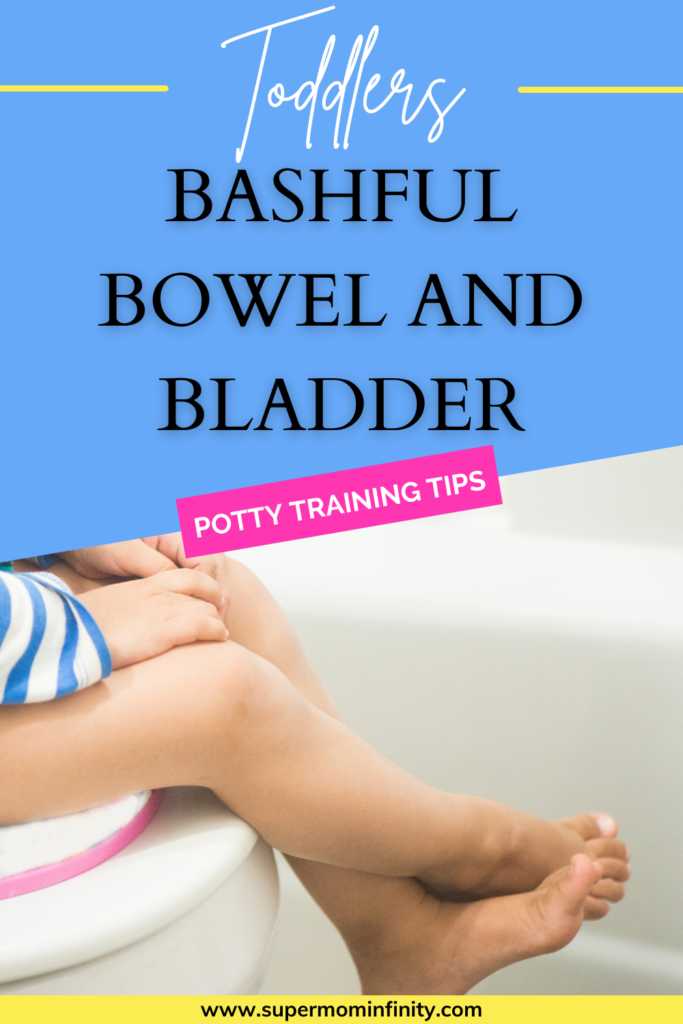
Potty Training Printables for Kids
Fun printable potty training activities for toddlers and potty training beginners. Our printables are hands-on potty training activities you can implement at home or in the classroom.
Potty With Baby Potato Head
Baby Mr. Potato Head toilet training activity is a fun hands-on learning activity for babies, toddlers, and preschoolers. Encourage object recognition and communication development for kids. Baby Mr. Potato Head offers a variety of teaching methods for early learners. All of his features can be learning tools to encourage speech and language development. Let the learning adventure begin and discover multiple ways you can utilize Baby Mr. Potato Head as your personal assistant.
At Home Potty Pocket Visual Communication Activity
Potty Pocket is an assistive device you can use to practice communication skills and encourage specific elimination needs of the bowel and bladder. Potty Pocket included a visual poster, 3 free communication cards, and Potty Pocket itself. It’s also a fun activity to help your little one feel fearless and excited about going to the toilet!!!
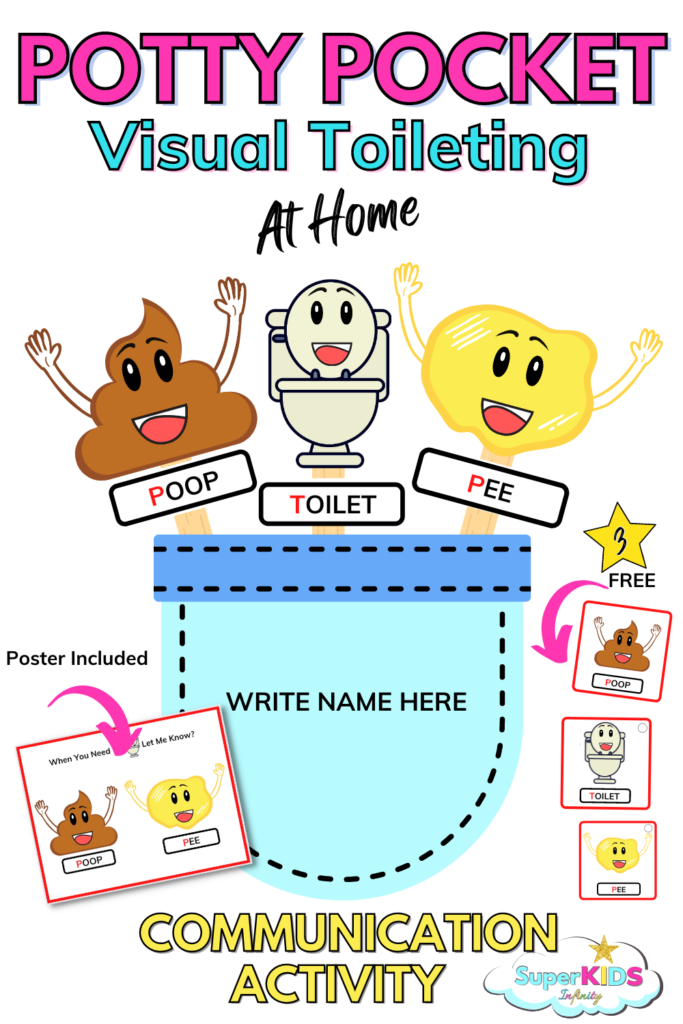
Potty Pocket encourages interaction to either raise the peep, poop, or toilet image high to the sky with excitement or use the image as visual cues to let you know when he or she needs to go. This activity was also designed for nonverbal children, children with speech and language delays, Autism, and Special Needs. Potty Pocket is a great motivational toileting activity for early learners.
Potty Pocket Classroom Activity
Let’s get the whole classroom involved!!! Potty Pocket Classroom Set can be included in your daily lesson plan to motivate and encourage the whole class to become fearless and excited about going to the toilet. Toileting can be challenging for some students however, children have the tendency to mimic others and become motivated when the whole class is participating in the activity. Potty Pocket is here to help students who hide when they have to go, the student’s who have toileting fear and anxiety and for students who need communication assistance.
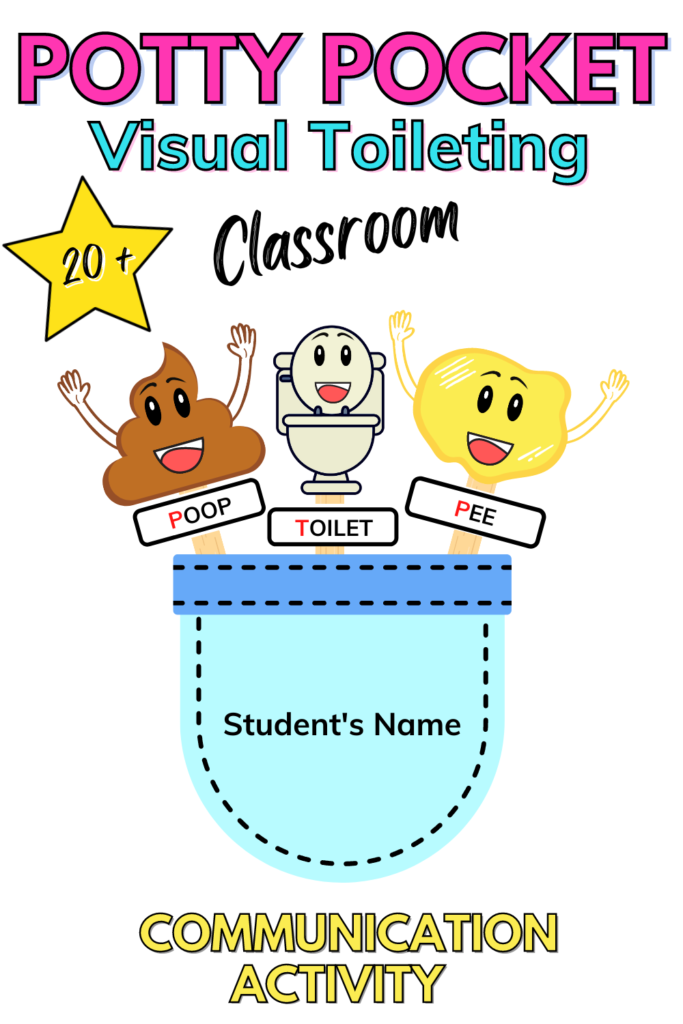
Discover more fun Early Learning, Special Education, and Autism Resources at SuperKidsInfininity!
Supporting Bashful Bowel and Bladder in Toddlers
Continue to help your child understand that it’s okay to go, we all need to go and we all do go!!! These strategies can also prevent toileting fear and anxiety that may be contributed to one bad experience, hard poop, and even toilet phobia. Orientate your child to the bathroom and everything within the area. Reassure your child’s understanding that they are safe and you are available if he or she needs you.
